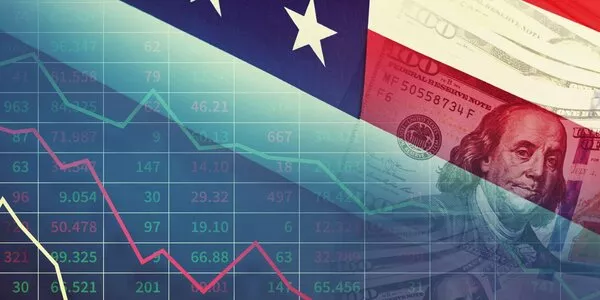
Weekly Update - Negative trend in « surprise » indicators: don’t jump to conclusions too quickly
Financial markets experienced strong downward and upward swings during the months of July and August. Initially, equity markets fell significantly in a context of the unwinding of carry-trades in Japan and labour market data in the United States falling short of expectations, then markets recovered strongly with good consumer and inflation data. These moves reflect investors' expectations whether the US economy can effectively perform a soft landing and hence the expected rhythm of the Fed interest rate cut cycle. We continue to favour the scenario of a soft landing for the US economy, The Jackson Hole symposium which begins on August 22 will be closely monitored as Jerome Powell is likely to shed light on the expected rate cut cycle.
From fears of a near recession in the United States... Equity markets started the summer with a sharp downward movement. Indeed, equity indices in major economies fell by nearly 5% between July 1 and August 7, with the Nikkei 225 in Japan falling by more than 20% over this period. Among the sectors, the "Growth" indices fell the most during this period, while the "Value" indices held up in an environment of overvalued "Growth" stocks. The declines were triggered by the unwinding of carry-trades in Japan and weaker-than-expected U.S. labor market data. The rise in the unemployment rate in July to 4.3%, above the level forecast by the Fed at the end of the year, increased investors' fears that the US economy is close to a recession.
... To the expectations of a soft landing. However, equity markets recovered significantly from the week of August 12, with the SP500 back in positive territory over the quarter (+2%), the STOXX 600 erased its losses for the quarter and the Nikkei down only 5%. The rally was supported by several factors such as better-than-expected services survey data in July, persistently resilient retail sales data, inflation that continues to move closer to the 2% target, and a strong corporate earnings season beyond large-cap tech stocks. Thus, the markets have gone in the space of two weeks from a fear of an imminent recession to expectations of a soft landing for activity with an easing of financial conditions.
A start of the rate cut cycle in September in a context of resilient growth. We continue to favour the scenario of a soft landing for activity and inflation in the United States, supported by a still positive outlook for household and corporate incomes and an easing of financial conditions. Indeed, while the labour market is slowing down in terms of job creation and wages, this slowdown is in line with the dynamics of the US economy before the Covid crisis. In addition, the continued decline in inflation should support household purchasing power. On the corporate side, the corporate margin rate remains at a high level, while the revenue outlook published by companies remains positive, thereby supporting the labour market. In this context, Jerome Powell's speech at the Jackson Hole symposium is widely anticipated. Given the stabilisation of inflation close to target and the slowdown in the labour market, it is likely that Powell will confirm a first rate cut for the September 18 meeting, with the focus of the monetary authority returning to the employment target. Markets will also be attentive to the pace of rate cuts, with the latter expecting 3 rate cuts of 25bps in 2024, cuts that are close to our scenario
Other highlights of the week
In the highlights of the week, we chose to talk about economic activity in the euro area as well as in China:
- Euro area PMI indices suggest resilient activity overall, but with wide disparities between sectors and countries. The composite indicator for the eurozone rose to 51.2 (a level above 50 means activity is expanding), with the services sector rising to 53.3 but the manufacturing sector still contracting to 45.6. This resilience in the service sector is due in particular to the strong acceleration in the French service sector in August, with an expansion to 55 benefiting from the Olympic Games effect. In Germany, on the other hand, the indices suggest that activity remains sluggish, with the services index decelerating to 51.4 and the manufacturing index remaining in sharp contraction at 42.
- Despite corporate earnings beating market expectations, the US equity market recorded its sharpest correction since October 2022 on Wednesday, with the NASDAQ losing over 3.5% and the S&P500 almost 2.5%. It was technology stocks that led the market downwards, as their results - although good - failed to live up to the high expectations of the markets. In Europe, earnings releases were less positive, and the Paris stock market was penalized by its exposure to the luxury goods sector, itself penalized by weak Chinese demand.




